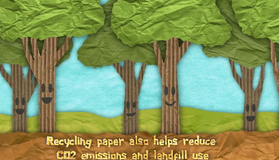How it’smade -- Natural rubber
Natural rubber comes from the milky sap of a tropical tree. Thousands of years ago, the native people of central and South America discovered that the hardened sap was elastic and bounced. They played games with the balls of the sap. When European explorers came along, it was soon a whole new ball game.
Today we make thousands of useful things from the fluid that circulates through rubber trees, everything from tires to balloons to boots. The seeds are sown on plantationslike this one in Thailand. It takes several years for the rubber trees to mature, then the sap is ready to tap.
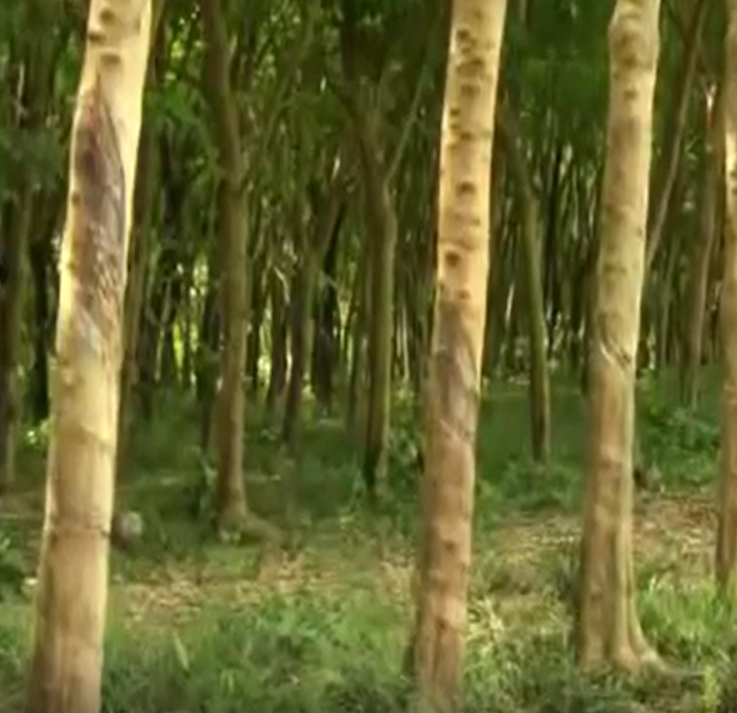
In the coolness of the morning when thesap flows freely, the farmworker slashes the bark with the hooked blade.
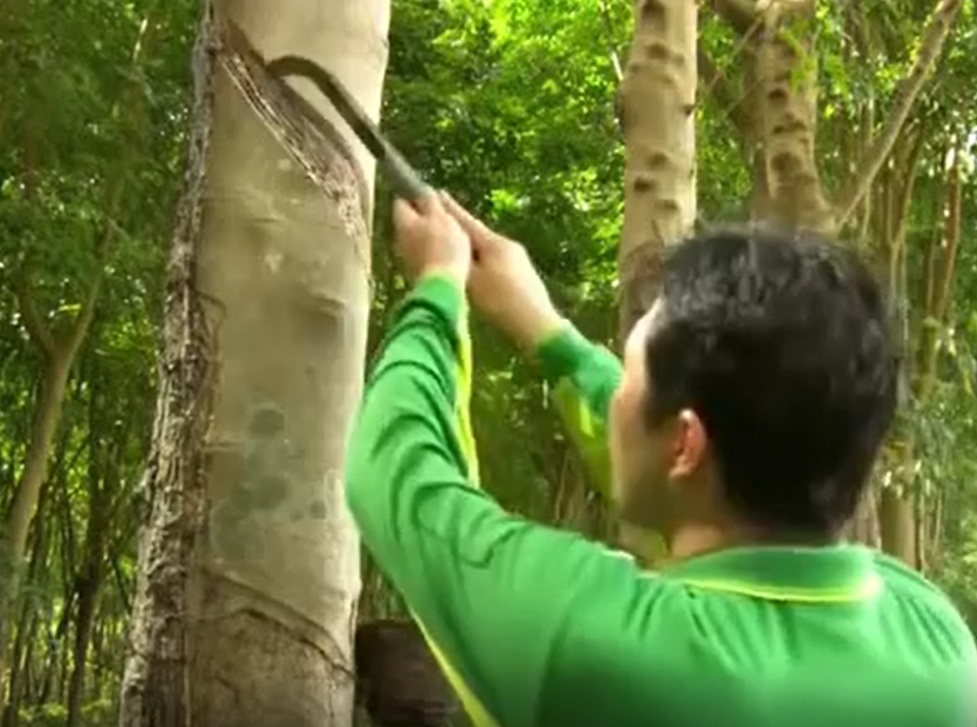
The sap oozes from the abrasion. It spills onto a metal spell inserted below the slashed section. The spell funnels the sap into a ceramic cup below. It flows for about five or six hours partially filling the cup. They wait a couple of days for the tree to recover and then tap another section of the tree.
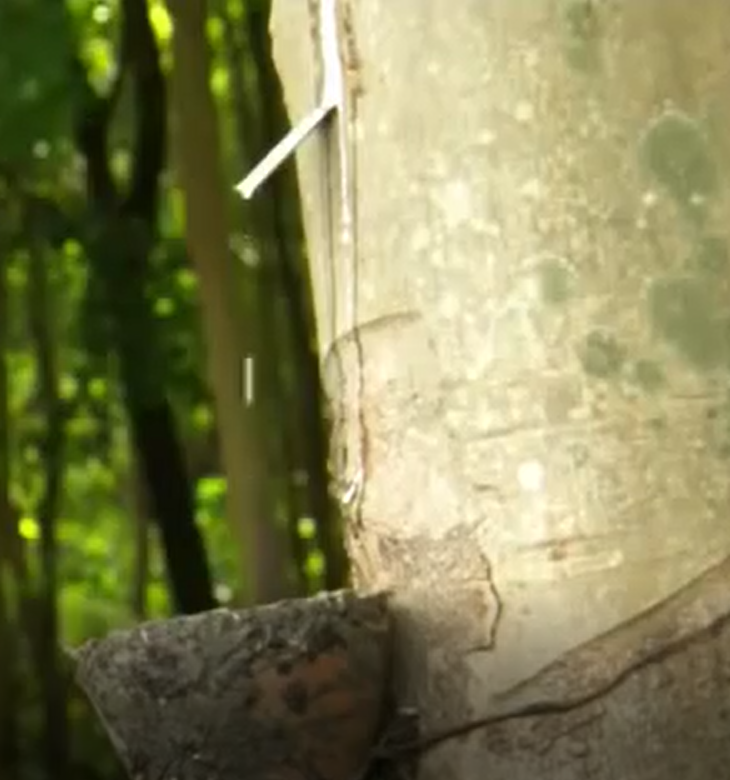
After straining impurities they pour the rubber sap into a plastic tub. They add formic acid and squish it around. The acid causes the sap to coagulate. After fifteen to thirty minutes it thickens to the consistency of tofu. This tofu like sap has a sticky structure that allows it to now be rolled out like dough.
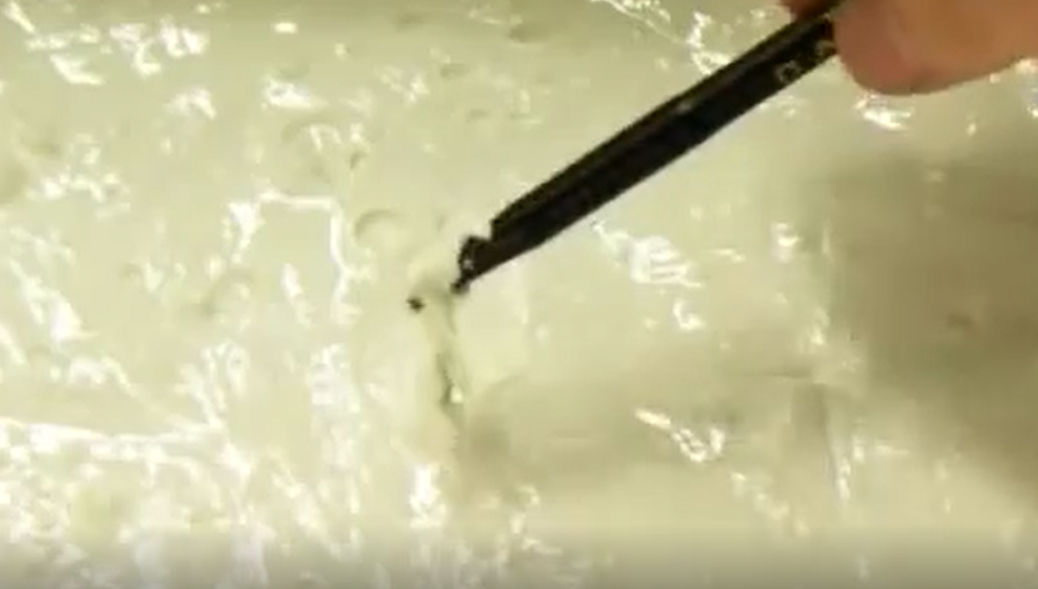
The rolling squeezes out excess water and leaves a ripped pattern on the sheets that increasesthe surface area to hasten drying. Then they rinse off the formic acid.
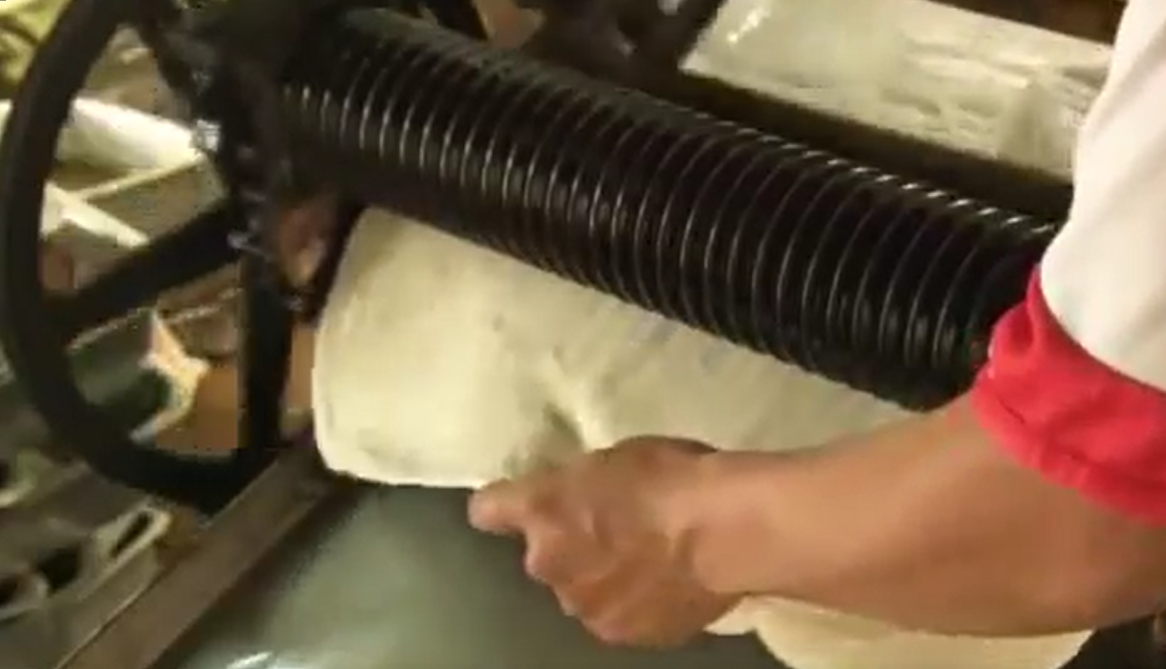
They hang the rubber sheets to dry for about five hours. As they dry, the rubber thickens and becomes stronger and the color darkens. The coagulated rubber sap has been transformed in a few short steps, it's gone from a liquid to a solid. Worker spiled the rubber sheets onto pallets and weigh the load. There's a little over aton and a half of rubber in this stack. They store the stacks in a warehouseuntil the next stage of processing.
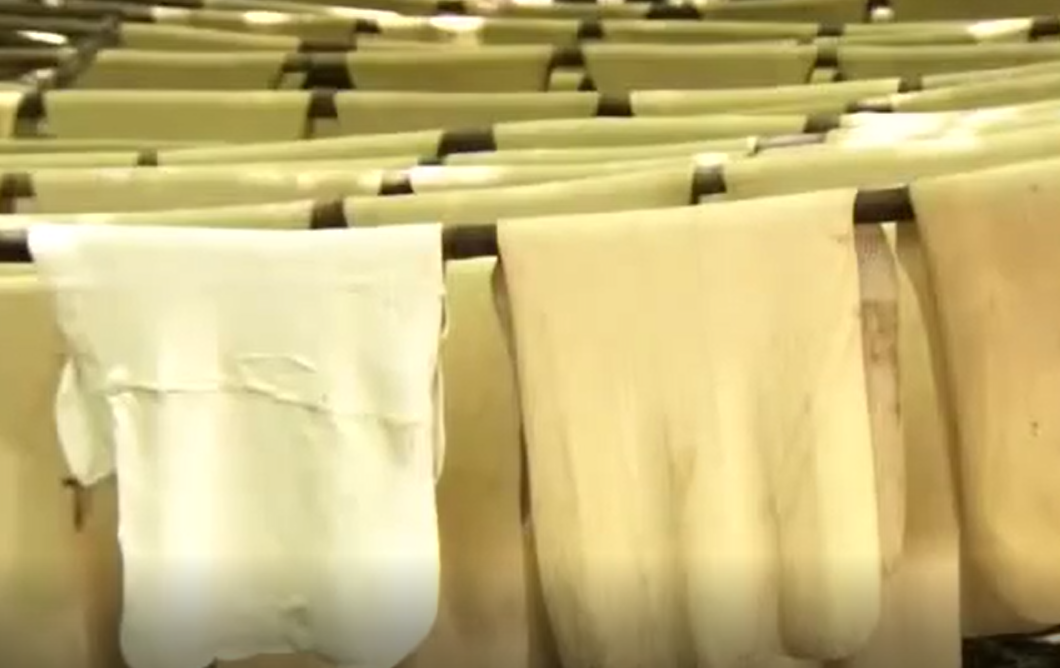
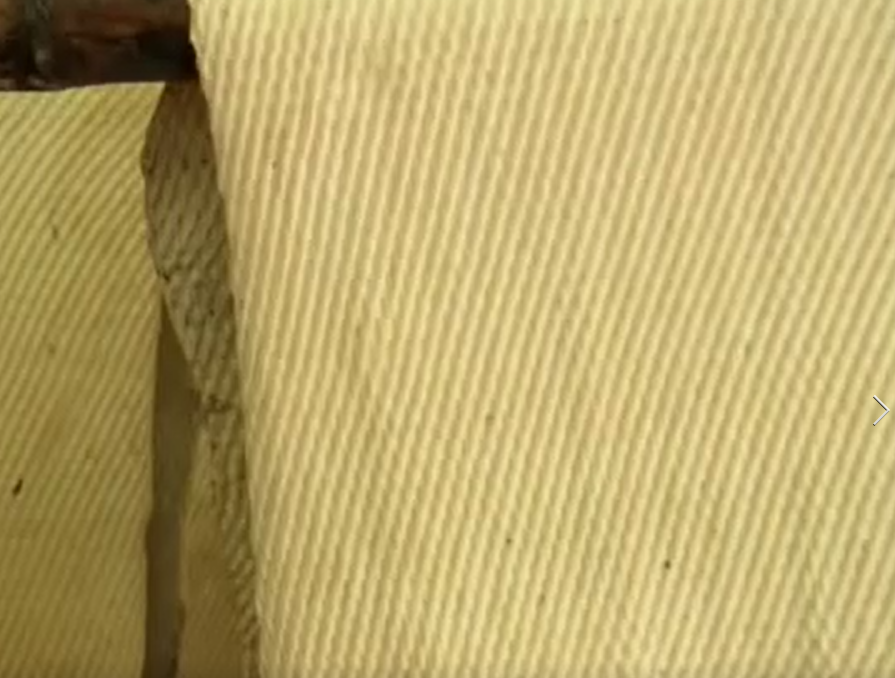
When they are ready to move on, workerspeel each sheet from the stack and soak them in water for about twenty minutes.This washes away some of the surface contaminants but not all. The rubber sheetsthen go into a machine with many brushes that scrub off more of the dirt. After one more rinse, the rubber sheets are squeaky clean. As you can see, the colorof the rubber sheets varies somewhat, depending on the tree they came from, their thickness and other factors. They hang the sheets on racks to drip-dry. They build a fire in a brick oven and smoke the rubber sheets in a chamber overheadfor five days. It's a slow low temperature smoking that preserves the sheets to prevent the growth of mold.
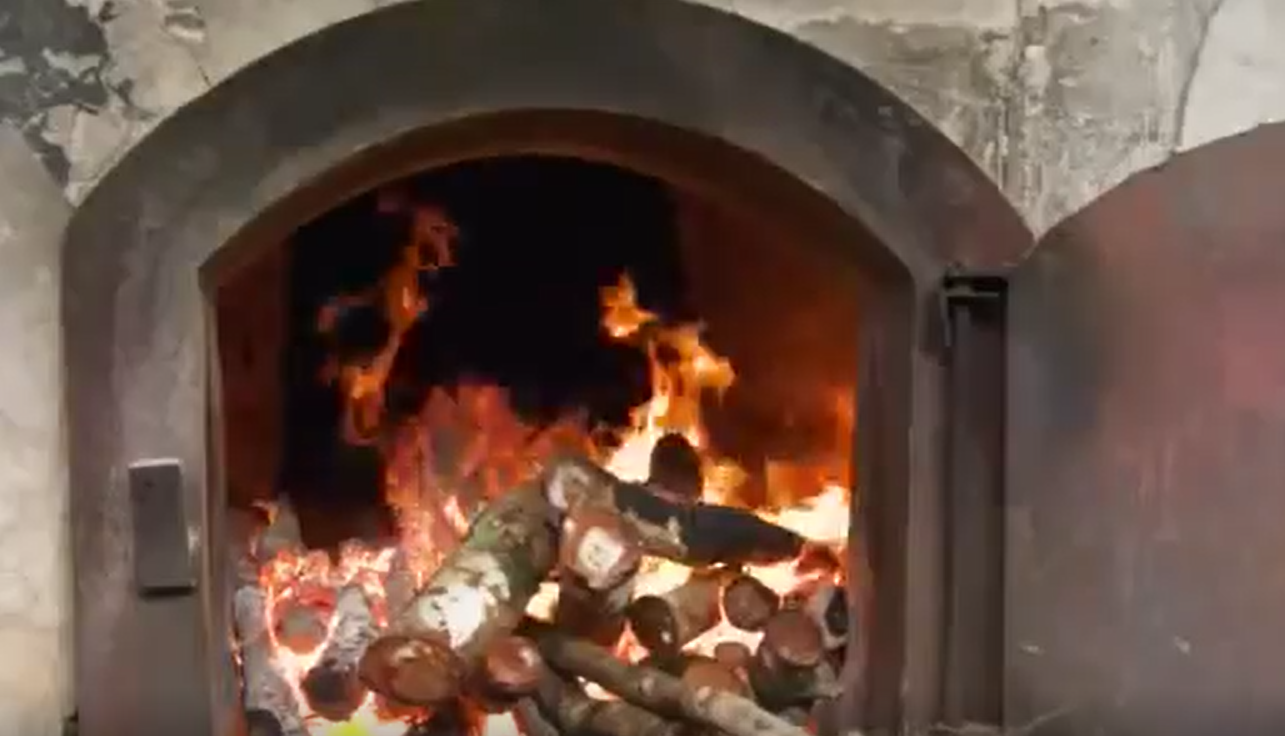
After smoking, they clip out contaminants like barkor insects that have become embedded in the rubber. In many cases they can'tget it all. They grade the rubber sheets by examining them against bright light, sheets with fewer remaining contaminants receive a higher rating and will commanda better price. They stack the sheets according to the grade, and then it'sinto a hydraulic Baylor. It presses the stack of rubber sheets into cube form.The dimensions of the cubes conform to international packaging regulations, sothey'll fit neatly into containers for shipping. They spray the rubber cubes with a mix of calcium carbonate and solvent, the mixture forms the film on thecubes that prevents mold and keeps them from sticking together during transport.This rubber is now ready for the next factory in the next transformation, it could become almost anything.
New words
ooze 渗出
coagulate 凝固
